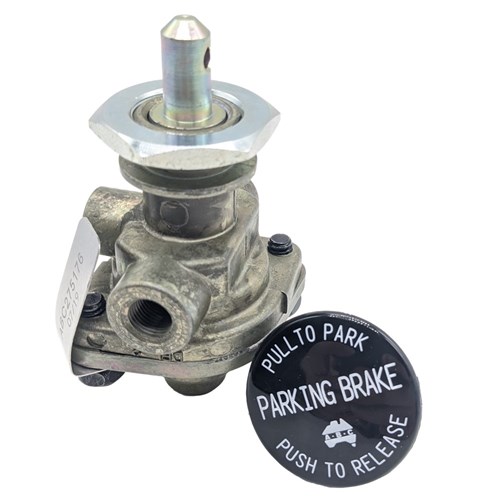Reliable Control Valves: Key Components for Effective System Management
Reliable Control Valves: Key Components for Effective System Management
Blog Article
Achieve Seamless Integration and Control With High Quality Building Automation Controls
In the world of modern structure management, the value of quality structure automation controls can not be overemphasized. Welcoming quality building automation controls is not just an issue of ease however a tactical critical for companies aiming to optimize their facilities' efficiency and sustainability.

Evolution of Building Automation Controls
Throughout the previous couple of decades, the evolution of constructing automation controls has actually substantially transformed the means buildings are handled and operated. Originally, building automation systems largely concentrated on standard functions such as managing heating, air, and air flow conditioning (COOLING AND HEATING) systems. Nevertheless, as innovation progressed, these controls have actually come to be extra innovative, allowing for a bigger range of structure systems to be integrated and managed centrally.
The evolution of building automation controls has seen a shift towards more intelligent systems that can adjust to changing conditions in real-time. This versatility is crucial for optimizing energy efficiency and guaranteeing resident comfort. In addition, modern-day structure automation controls currently provide attributes such as predictive maintenance, remote monitoring, and information analytics, allowing center managers to make data-driven decisions to improve building performance.

Benefits of Quality Assimilation
The development in structure automation manages in the direction of even more smart systems has underscored the significant advantages of top quality assimilation in maximizing structure procedures and boosting total performance. Quality combination of building automation controls provides a number of vital advantages. It leads to enhanced power efficiency by enabling different systems to function with each other effortlessly, making certain optimum efficiency and reducing power wastefulness. Second of all, quality combination improves owner convenience and performance by enabling customized control over ecological setups like temperature, illumination, and air top quality. This personalization can bring about a more comfortable and conducive working or living environment. Furthermore, quality assimilation simplifies maintenance and troubleshooting procedures, as all systems are adjoined and can be kept track of and regulated from a centralized interface. This central control also provides far better exposure and insights into structure performance, making it possible for proactive upkeep and optimization methods. In general, the advantages of top quality assimilation in structure automation controls are undeniable, using enhanced effectiveness, convenience, and operational performance.
Improved Individual Experience and Availability
Enhancing customer interaction with structure automation controls through intuitive design and boosted availability boosts the overall experience for owners and facility managers alike. By concentrating on user experience, developing automation systems can come to be much more effective and straightforward. User-friendly user interfaces, clear navigating, and customizable setups encourage users to engage with the controls easily and efficiently.
Accessibility functions play a vital duty in guaranteeing that all individuals, consisting of those with specials needs, can use the structure automation controls easily. Integrating attributes such as voice commands, responsive switches, and color-contrasted screens can enhance ease of access and make the controls much more inclusive.
In addition, improved user experience leads to greater customer complete satisfaction, increased performance, and better decision-making. Residents can readjust ecological settings according to their choices, while center managers can successfully handle and monitor structure systems - control valves. Generally, focusing on customer experience and availability in building automation manages adds to a more seamless and productive structure environment for all stakeholders entailed
Sustainable Practices Through Automation

Moreover, automation can assist in the assimilation of renewable power resources such as solar panels or wind turbines into building procedures. Through automation, buildings can align with modern sustainability objectives and contribute to a greener future.
Future Trends in Building Control Equipment
One noticeable fad forming the future of building control systems is the increased integration of Artificial Intelligence (AI) and maker understanding. In addition, the Internet of Points (IoT) is reinventing building control systems by connecting sensing units and gadgets to enhance and simplify operations efficiency.
One more vital trend is the emphasis on cybersecurity procedures to safeguard against prospective hazards to developing automation systems. As structures become a lot more interconnected, making certain durable cybersecurity methods will find out here certainly be important to secure sensitive data and protect against unauthorized accessibility.
Moreover, the shift towards cloud-based platforms is obtaining momentum, enabling centralized control and remote accessibility to structure systems. This assists in easier surveillance, upkeep, and updates, improving the general performance and versatility of building control systems. As innovation continues to advancement, these patterns are expected to form the future landscape of structure automation controls, driving advancement and sustainability in the built setting.
Verdict
To conclude, developing automation controls have actually progressed substantially, using various benefits such as boosted user experience, ease of access, and lasting techniques. Quality assimilation plays an essential function in achieving seamless control and reliable procedure of structure systems. Future trends in building control systems are likely to concentrate on further enhancing automation capabilities for enhanced power performance home and overall performance. It is crucial for structure owners and drivers to prioritize the adoption of high quality structure automation manages to optimize building operations and accomplish lasting sustainability objectives.
In the realm of modern structure monitoring, the significance of top quality building automation controls can not be overstated. Generally, the evolution of structure automation regulates continues to drive advancement in the structure monitoring industry, using new possibilities for creating smarter and a lot more lasting structures.
The advancement in building automation controls towards even more smart systems has highlighted the substantial advantages of high quality integration in enhancing building operations and improving total performance. Generally, focusing on user experience and ease of access in structure automation manages adds to a much more productive and smooth building setting for all stakeholders entailed.
It is vital for structure proprietors and drivers top article to prioritize the fostering of quality structure automation manages to optimize building operations and achieve lasting sustainability goals. - control valves
Report this page